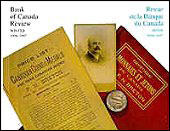December 11, 1996
The impact of exchange rate movements on consumer prices
In the first, mostly theoretical, part of this article, the author analyses the factors that affect the pass-through of exchange rate movements to consumer prices. In the second part, she studies the recent Canadian experience in this area, starting from 1992. The analysis in the first part of the article is used to investigate why the depreciation of the Canadian dollar by almost 20 per cent between 1992 and 1994 did not produce as much of an increase in the inflation rate as predicted by conventional estimates of the exchange rate pass-through.
The author first explains this phenomenon using the factors described in the theoretical part of the article: demand conditions, the costs of adjusting prices, and expectations about the depreciation's duration. She then examines the role of more specific factors, such as the abolition of customs duties on trade between Canada and the United States and the restructuring of the retail market. It is clear that the latter two factors helped neutralize the effect of the depreciation on prices.
